
Mark Bryan is a robotics engineer who has been married for 11 years and has a daughter. He identifies as straight and chooses to dress unconventionally. Bryan is an American living in Germany, and he doesn’t believe that fashion has to be gendered. You can find Bryan wearing a skirt and heels to work or out anywhere else he goes on any given day.
Bryan said he doesn’t like how limited men’s choices are in the fashion department, especially when it comes to office attire. Men’s pants only come in a few colors, mostly black, gray, dark blue and the occasional pinstripe, and cuts.
The stylish dresser believes that if women are allowed to wear pants, men should be able to wear skirts and dresses as well. Bryan likes how skirts come in many styles and patterns – and many more colors – unlike men’s clothing.
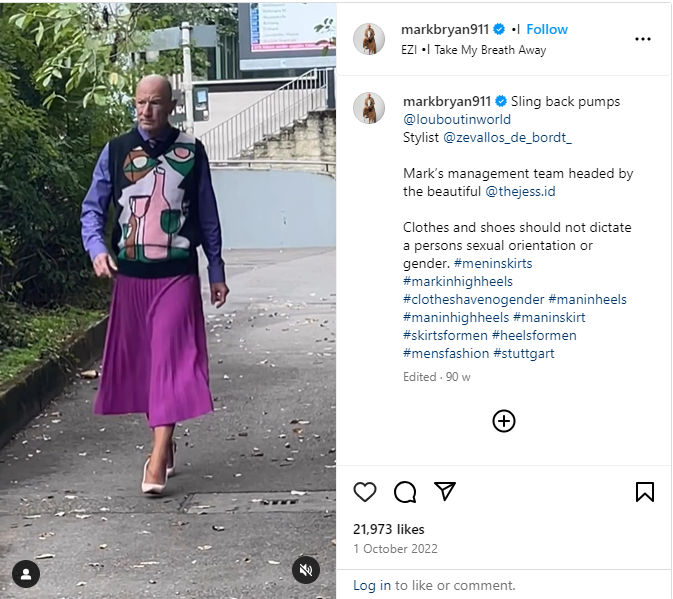
Bryan prefers to mix traditional gender looks by wearing masculine attire on his top half, like a blazer and tie, and traditionally feminine attire on the bottom half. He will typically wear a pencil skirt and four-inch heels on the bottom.
Wearing high heels is no problem for Bryan. He first learned how to do it when his college girlfriend asked him to wear high heels while dancing with her so that they were on the same level. They continued this for over a year.
Bryan doesn’t let stereotypes or assumptions stop him from dressing in a way that brings him joy. He challenges expectations and does so unapologetically. Keep reading to hear what Bryan has to say about his fashion choices.
Bryan has a very clear idea about how he likes to dress. He told Bored Panda: “To me, clothes have no gender. I prefer skirts to dresses. Dresses don’t allow me to mix the genders. I prefer a ‘masculine’ look above the waist and a non-gendered look below the waist. It’s all about clothes having no gender.”
He continued: “I am old enough to remember that in school, the girls could not wear pants. Pants have now become a non-gendered article of clothing. So why can’t skirts and heels be non-gendered? Besides, men wore heels before women did. Maybe not today’s stiletto-style heels, but men did wear heels before women.”
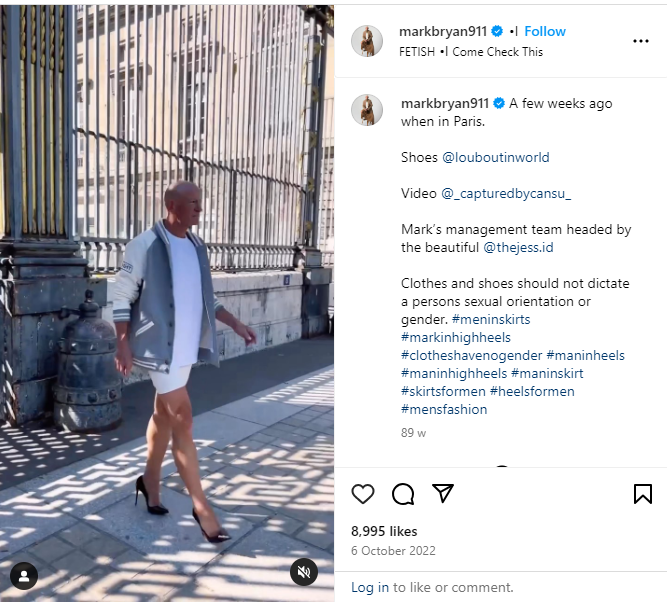
Bryan is correct about that. High heels can look back on a long history. Although historians and archaeologists cannot date their invention clearly, they have been around at least since the 10th century. And they were not a fashion statement at first. No, the first recorded use of high heels was eminently practical: the Persian cavalry wore boots with heels, called a kalash or galesh, that made it easier for them to keep their feet inside their stirrups. This is, by the way, the same reason why cowboy boots have a small heel as well!
Since owning a horse was a sign of wealth, only well-off men could afford to wear these high-heeled boots. The use of them slowly spread across Europe, and high heels heels became one of the fashion signs of rich noblemen or traders. In fact, following the Great Schism of the Christian Church in the 11th century, even the pope wore high heels.
It wasn’t until several hundred years later that fashion slowly changed. During the 18th century, cultural concerns in Europe came up about the distinction between males and females and talk about what men and women should wear arose. This is the point in time where the belief that fashion is something effeminate and frivolous that “real men” shouldn’t care about hails from. Due to these changing beliefs, men largely abandoned high heels heels, as they were seen as impractical and mere accessories.
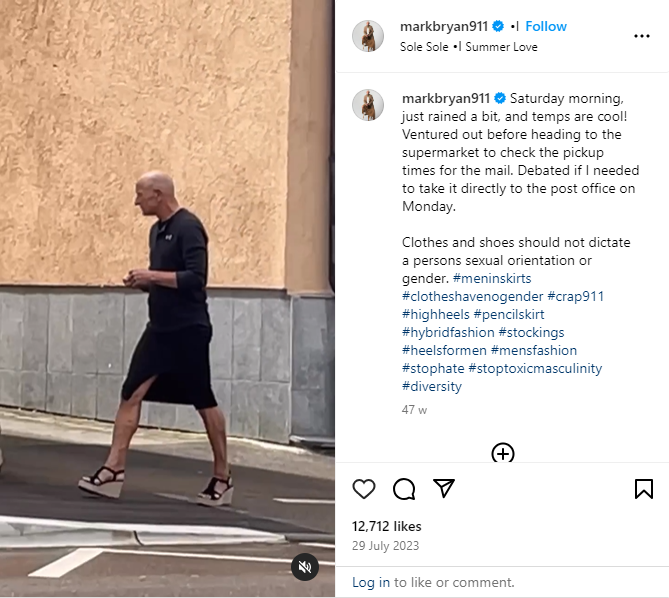
Bryan is one of the examples of how high-heels are slowly coming back as an accepted form of footwear for men. Although the engineer champions the option of wearing high-heeled shoes for men, he understands many people will look twice when they see him. He compares his style choices to someone who chooses to dye their hair bright colors. He explained:
“Take a person with bright green hair. Green hair is not normal. You look up and see this person, your mind tells you it’s a person with green hair, you think to yourself, that’s odd or interesting, then you go back to do what you were doing and don’t give it another thought. I believe this is the same when people see me in a skirt and heels.”
Bryan doesn’t have to struggle to find skirts and heels that fit him either. He wears a size 8 in skirts, and with smaller feet for a man, his shoe size in heels is 8.5. If you know a man who is considering trying out wearing heels and skirts too, Bryan suggests starting with a lower heel until you feel more comfortable walking in high heels.
What do you think of Mark Bryan’s style choices? Do you know any men who would try walking in high heels? Let us know, and be sure to send this along to your friends and family.
A woman converts a Boeing 747 into a fully functional home.
Buses, tiny houses, and shipping containers have all become popular building materials for one-of-a-kind homes.
These affordable substitutions for conventional housing provide the same level of comfort and a variety of customization options.
Jo Ann Ussery, on the other hand, designed her own unique home before it became popular.
She bought an old Boeing 727 and turned it into a lovely house.
Wonderful housing.
When Ussery’s home in Benoit, Mississippi, was destroyed in 1993, her adventure officially began.
She and her two kids needed a place to live because her husband had unexpectedly passed away, but they weren’t wealthy.
She had believed that purchasing a trailer would make all of her problems go away, but she soon realized she couldn’t afford a house big enough to accommodate her enormous family.
Ussery’s brother-in-law Bob, who works as an air traffic controller, suggested they try living aboard a plane.
Ussery was drawn to the idea and visited a Boeing 727 that had been disassembled for its parts.
Despite the piece’s $2,000 price tag (including shipping), she fell in love at first sight.
Ussery nicknamed her private Boeing 727 “Little Trump” after learning that Donald Trump also owned a private Boeing 727.
She started her expensive and time-consuming home improvements right away.
Less than $30,000 (or about $60,000 in modern currency) went toward the renovation.
While she worked on the inside, she needed to make sure it stayed in its current position.
Ussery made use of the lake that was already present on her property by bringing the plane down with its nose over the water. To achieve this specific goal, a sizable amount of concrete was used to secure the tail. The interior, which was roughly 1,500 square feet, was immediately demolished by her.
The aircraft measures 138 feet in length and has 76 windows.
Although the aircraft’s windows weren’t functional, as is typical of commercial aircraft, she wasn’t bothered by this because the air conditioning was working.
She upgraded the insulation and put in new flooring. What specific components of the original 727 were kept?
It is a brilliant idea to only have one airplane bathroom and overhead bins for your belongings.
The interior design.
Ussery was able to concentrate on the finer details and improved comforts once the significant changes were finished.
The remodeled jet had three bedrooms, a living room, a kitchen, and even a laundry room.
The washer and dryer were there, but it also had a phone and an oven.
Without a doubt, Ussery’s work on the cockpit’s view of the lake was the most significant improvement.
It was transformed into a royal master bathroom with a soaking tub by her.
She designed the room’s layout to give everyone who was in it the sensation of floating.
The renovation was completed entirely by Ussery, which is especially noteworthy.
Before deciding to make her converted plane into a public museum, she lived there from 1995 to 1999.
Sadly, after being transported a short distance, it fell off the carriage and collapsed.
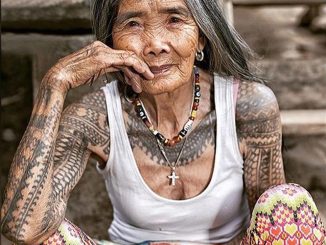

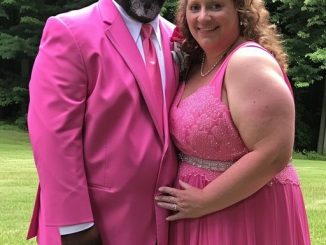
Leave a Reply